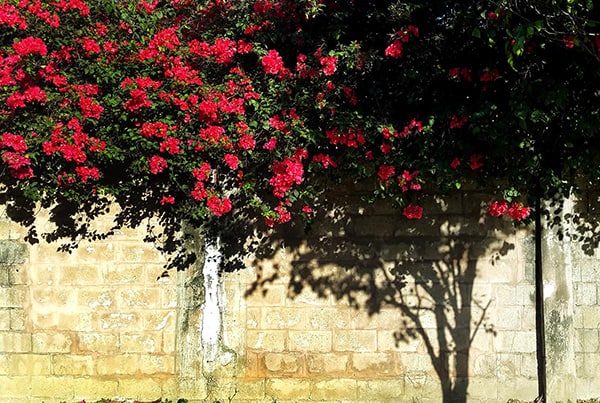
BitDepth#998 for July 21, 2015

A favourite from the project, day 50 was a turning point of possibility in the 2015365 project. Photo by Mark Lyndersay.
Readers of this column may know that I am, in another persona, a photographer.
The obsessive reader may recall a column in January which noted the start of a personal project which sought to merge both spheres of my activities.
The 2015365 project is a simple enough thing. I capture five frames with my smartphone, choose one and post it to a dedicated website.
This column reports on my progress in realising that hopeful mission.
The biggest challenge has been in sticking to my “no rollovers” rule. Some days are a bounty of subject matter, others offer a depressing array of office walls in muted professional colours.
Visually, it can range from abundance to famine in just 24 hours and squeezing a frame from uninspiring stone, or more likely corporate concrete, can be a challenge.
As a photographer, I often squeeze a big bright world into the keyhole of a camera lens, but working with a smartphone narrows that down to a credit card slit. You quickly learn that your technique must adapt to the smartphone’s way of doing things. For the most part, that isn’t far different from my normal way of shooting.
I tend to prefer a wide angle lens, often used close and if anything, the typical smartphone lens, at around 30mm, is a bit narrow for me.
Most smartphones are automatic cameras, though the Samsung S6, which I’ve just started using on the project, has a ‘Pro’ mode, which allows a user to override some of those functions. Particularly useful is an exposure compensation slider good for around two an a half stops over and under the camera’s settings.
The S6 also has a lens aperture of f1.9. I won’t bore you with the details of what that means in photographic circles, but you’ll definitely find that you have far more success photographing in low light than you did before.
My first three posts with the S6 were all shot at twilight, and the results were inspiring.
I haven’t been as rigorous about my five frames per day rule though. On a few truly golden days, I’ve got the picture of the day in three deft taps. On others, I’ve been, frankly, trawling, hammering away with crossed fingers.
There have been some transcendental moments, images I look at with surprise to this day.
Composing an image on a smartphone screen can be a challenge. When the light is good, the screen can be almost invisible.
When the light is poor, the screen is big and bright, but difficult to keep as steady as I’d like.
So after six months, what have I learned from the experience? I’d set out to free myself from the yoke of gear to explore photography as a pure experience, a single camera, always in my pocket, a single lens and a scope that made everything a possibility.
I discovered that there are limitations on everything. I go to the same places quite often during the week, and finding new photographs to make in those spaces can be particularly challenging.
Themes don’t make it any easier. I committed 26 days to photographing the alphabet, confident that my appreciation of kerning, ascenders and descenders would make for a fascinating little side project.
By and large that didn’t work out so well. I couldn’t plan far enough ahead to make the kind of images I’d hoped for, and it shifted the project from discovery to plodding hard work.
Which isn’t to say that the project itself isn’t tough on its own? As an exercise in seeing, I sometimes lapse, allowing large parts of the day to be consumed with the meanderings of daily life only to realise that it’s getting late and I’ve got nothing.
As I write this, I’m about to go take a turn to see what turns up for day 200. I have no idea what’s going to turn up. Why not visit the website and see?


